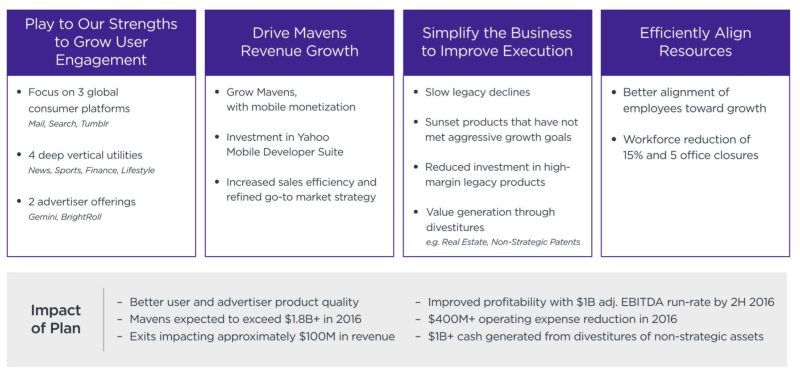

A low receivables turnover ratio may be because of a company having a poor collection course of, bad credit insurance policies, or clients that aren’t financially viable or creditworthy. Most organizations nonetheless report all services at their traditional and customary costs , and make adjustments when posting the payments. Then the balance in the account is lowered by the fee, the adjustment because of contractual allowances, sliding scale discounts or other components. When a company engages in credit sales, the account receivables increase with sales and again reduce on clearing payment.
If debtors pay quickly, it helps cashflow and reduces the risk of customers not paying the money they owe. It gives an impression of the wrong choice of debtors or insufficient efforts to collect the cash. Not only will it increase the cost of interest to the company, but it will also suggest a weak liquidity position of a firm and higher chances of occurring bad debts. When calculating average collection period, ensure the same timeframe is being used for both net credit sales and average receivables. For example, if analyzing a company’s full year income statement, the beginning and ending receivable balances pulled from the balance sheet must match the same period.
- It would seem a little contradictory to say that even a very high receivable turnover ratio is not good.
- The time spent waiting for the money to be collected is the money wasted.
- If customers feel that your credit terms are a bit too restrictive for their needs, it may impact your sales.
- There are a few different ways to calculate the debtor days ratio, and the right calculation to use depends on the context in which you need to know your debtor days.
- The best average collection period is about balancing between your business’s credit terms and your accounts receivables.
To calculate Average collection period, we need the Average Receivable Turnover and we can assume the Days in a year as 365. We have to calculate the Average collection period for Jagriti Group of Companies. The weighted average cost of capital calculates a firm’s cost of capital, proportionately weighing each category of capital. Cost of capital is a calculation of the minimum return a company would need to justify a capital budgeting project, such as building a new factory.
Impact of Taxes on Cost of Debt
The receivables turnover ratio could be calculated on an annual, quarterly, or monthly foundation. The debt to fairness ratio may be misleading unless it is used along with industry average ratios and financial information to find out how the corporate is using debt and equity as compared to its trade. As the average fee period increases, cash should increase as nicely, however working capital remains the same.

This means that if you receive a payment today, you can reinvest it today, and start making profits immediately, rather than receiving the same amount on a later date. A business might suffer a loss, not because it is not making enough sales, but simply because of the lack of debt management. The Debtor days ratio is a tool that will help you determine the average number of days it is taking for your company to collect its receivables. A large proportion of borrowed capital is risky as interest and capital repayments are legal obligations and must be met if the company is to avoid insolvency. The payment of an annual equity dividend on the other hand is not a legal obligation.
Nevertheless, Days Sales Outstanding also comes with limitations, such as an analyst should compare it for companies within the same industry. Ideally, if the companies have the same business model and revenue, a comparison makes more sense. Get instant access to video lessons taught by experienced investment bankers. Learn financial statement modeling, DCF, M&A, LBO, Comps and Excel shortcuts.
How to Use Average Collection Period
Most companies often account for the accounts receivable outstanding, sometimes weekly and infrequently month-to-month. DefinitionThe average fee period is defined as the variety of days a company takes to repay credit score purchases. The common assortment interval is the common variety of days between 1) the dates that credit gross sales have been made, and a pair of) the dates that the money was obtained/collected from the customers. The average assortment period can be referred to as the days’ gross sales in accounts receivable. As such, the beginning and ending values chosen when calculating the common accounts receivable should be carefully chosen so to accurately reflect the company’s performance.

In addition, the kind of industry by which the company does business affects how debt is used, as debt ratios range from business to trade and by particular sectors. For example, the common debt ratio for pure fuel utility firms is above 50 %, while heavy development corporations average 30 % or less in property financed through debt. Thus, to find out an optimum debt ratio for a specific firm, it is important to set the benchmark by preserving the comparisons among rivals. A debt-to-asset ratio is a financial ratio used to evaluate an organization’s leverage – specifically, how much debt the business is carrying to finance its belongings. One of the best methods out there is the use of the accounts receivable-to-sales ratio. A higher figure means that the business may have issue amassing payments from its clients.
🔎 Another average collection period interpretation is days’ sales in accounts receivable or the average collection period ratio. The quick ratio recognises that inventory often takes a long time to convert into cash. In practice a company’s current ratio and quick ratio should be considered alongside the company’s operating cash flow. Accounts ReceivablesAccounts receivables is the money owed to a business by clients for which the business has given services or delivered a product but has not yet collected payment. They are categorized as current assets on the balance sheet as the payments expected within a year. Accounts receivables is the money owed to a business by clients for which the business has given services or delivered a product but has not yet collected payment.
The formula below is also used referred to as the days sales receivable ratio. The average collection period is determined by dividing the average AR balance by the total net credit sales and multiplying that figure by the number of days in the period. Debtor days also known as debtor collection period measures the average number of days it takes to collect payments after sales have been made. Calculating average collection period with accounts receivable turnover ratio.
🔎 You can also enter your terms of credit in our calculator to compare them with your average collection period. The average number of days between making a sale on credit, and receiving its due payment, is called the average collection period. It looks at how many times a company’s operating profits exceed its interest payable. The higher the figure, the more likely a company is to be able to meet its interest payments. Further, the average daily sales can also be calculated by dividing the annual total sales by 365 days . Balance Sheet Of The CompanyA balance sheet is one of the financial statements of a company that presents the shareholders’ equity, liabilities, and assets of the company at a specific point in time.
Average Collection Period Formula
This measures the ability of the organisation to generate sales from its capital employed. Generally, the higher the better, but in later studies you will consider the problems caused by overtrading . Commonly a high asset turnover is accompanied with a low return on sales and vice versa.
Profit is necessary to give investors the return they require, and to provide funds for reinvestment in the business. Receivable Days Formula can also be expressed as average accounts receivable by average daily sales. Suppose a company generated $280k and $360k in net credit sales for the fiscal years ending 2020 and 2021, respectively.
Calculate Receivables Turnover & Average Collection Period
This ratio throws light on the effectiveness of the business in utilizing its working capital blocked in debtors. It also indicates the frequency of conversion of receivables into cash in a given financial year. So, fundamentally, it comments on the liquidity of the business’s receivables. The average collection period is the average number of days it takes for a credit sale to be collected.
Accounts receivable turnover ratio is calculated by dividing total net credit sales by average accounts receivable. Becky just took a new position handling the books for a property management company. The business has average accounts receivable of $250,000 and net credit sales of $400,000 with 365 days in the period. Because their income is dependent on their cash flow from residents, she wants to know how the company has been doing with its average collection period in the past year. The ratio also measures how many occasions a company’s receivables are converted to cash in a interval.
Janet Berry-Johnson is a CPA with 10 years of experience in public accounting and writes about income taxes and small business accounting. Get access to forecasting, scenario-planning, debtor management debt collection period formula and business funding with a 30-day free trial. The articles and research support materials available on this site are educational and are not intended to be investment or tax advice.
We have Opening and Closing accounts receivables Balances of $25,000 and $35,000 for Anand Group of companies. This formula is useful because it takes into account fluctuations in the economy, as well as company-specific debt usage and credit rating. If the company has more debt or a low credit rating, then its credit spread will be higher. There are a couple of different ways to calculate a company’s cost of debt, depending on the information available.
How to Automate Your Accounts Receivable Process for Accelerated Cash Flow
It is worth noting that the debtor days ratio can provide an interesting insight into a company’s cash flow. With the help of our average collection period calculator, you can track your accounts receivables, ensuring you have enough cash in hand to meet your alternate financial obligations. This is calculated in a very similar way to the receivables collection period. Again, for liquidity purposes the shorter this period the better, as less cash is tied up in inventory. On the other hand, too little inventory can result in production stoppages and dissatisfied customers.
As a small enterprise proprietor, I recognize the importance of well timed funds from my customers. A relatively short average collection period means your accounts receivable collection team is turning around invoices quickly and everything is operating smoothly. The average collection period is the time a business takes to convert its trade receivables to cash. It means that Company ABC’s average collection period for the year is about 46 days.
